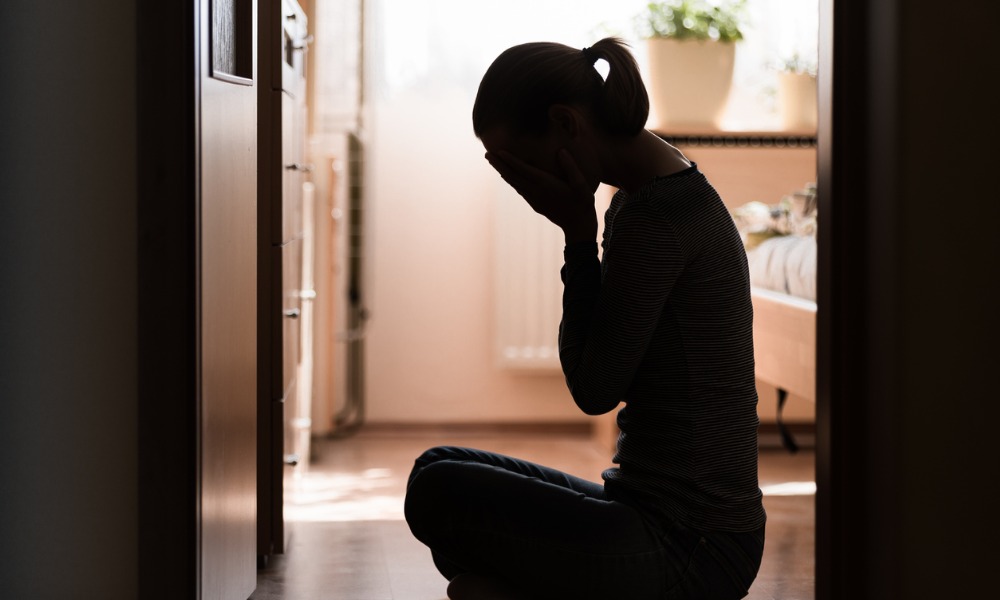
Women now trail behind male colleagues on two-thirds of the 40 desired indicators of a thriving workplace

Within the full-time workforce, it’s far more common for women to have negative experiences at work than men, according to SuperFriend CEO, Margo Lydon.
“But what we’re seeing across both male and female workers, is a reported decline in accessibility and willingness to listen from leadership.”
Lydon’s comments come as half of all Australian women in the workforce (55%) have reportedly experienced a mental health condition, with a quarter believing their workplace either caused, or worsened their mental health condition, according to research by SuperFriend.
The Gender Identity Report is a snapshot taken from SuperFriend’s annual Indicators of a Thriving Workplace (ITW) Report, which surveys 10,000 Australian workers.
The ITW Report measures the current state of mental health and wellbeing in Australian workplaces, against a desired state.
Despite the heightened focus on women’s experiences at work following the #MeToo movement, and an increasing focus on ensuring fair remuneration and workplace opportunities, the Report has found that Australian women are further from thriving in 2019 than the previous year.
Women now trail behind male colleagues on two-thirds of the 40 desired indicators of a thriving workplace.
The notable decline has been most evident for women who are working full-time, representing the largest group of women in the workforce. The Report also highlighted that women working part-time were found to be increasingly thriving in their workplaces.
In the full-time workforce, men are closer to thriving than women, but men working casually are the furthest from thriving and the gap is widening.
The downturn is centred around male casual workers in the 18 - 35 age group (down 7 points) due to substantial declines in the leadership and culture domains (both down more than 10 points), two of the five essential domains for creating a thriving workplace.
According to Lydon, the research consistently points to the critical importance of good leadership when it comes to the mental health of an organisation’s workers.
The research also found that nearly a quarter of men and women (22%) describe their job as highly stressful.
In terms of the top factors impacting workers, women are stressed more frequently than their male counterparts (38% vs 35%), specifically around their workload, and dealing with customers and colleagues.
Job insecurity remains the most common experience regardless of gender, but while it’s becoming less of an issue for women, it’s rising for men aged between 45-64 years.
Bullying and discrimination in the workplace are declining for both genders, however, bullying is still more common among women.
But the most worrying increase found in the analysis of the results, pertains to work-related insomnia among women. This has moved into the top three issues negatively impacting working Australian women. Peaking in the 35-44 age group (27%), women under the age of 25 drove the recent spike (22%).
Lydon said that stress is a normal part of life, but prolonged stress can have detrimental effects on our mental and physical health.
“Organisations can support workers by working together with their staff in planning for stress as a team, co-creating a safe and accountable space, and making sure their leaders are accessible,” said Lydon.
By way of improvement, a slightly higher proportion of men believe that their workplace is taking action (44% vs 42% of women) in creating a mentally healthy workplace. Among those whose workplaces have not taken any action, a skills gap among managers is the most common barrier.
In those workplaces, the same proportion of men and women believe that cost is a major barrier, but women see several other barriers ahead of that, particularly lack of commitment from the top.
Currently only 11% of workplaces have a policy in place to ensure mental health and wellbeing training occurs regularly.
Lydon added that at a time when gender equality, workplace relations and attracting and retaining women across all industries is of key importance, there are many steps organisations can take to make their workplaces more inclusive.
“One of the most effective ways to improve worker wellbeing, across an entire workforce, is to ensure that all leaders regularly participate in mental health and wellbeing training,” said Lydon.
“Establishing this as a workplace policy, is one of the most crucial characteristics that indicate a workplace is thriving, and can have far reaching positive effects for the business as well as every worker, every day.
“The most successful organisations today are the ones that are committed to diversity and inclusion and creating an environment in which all employees can thrive and bring their best selves to work.”